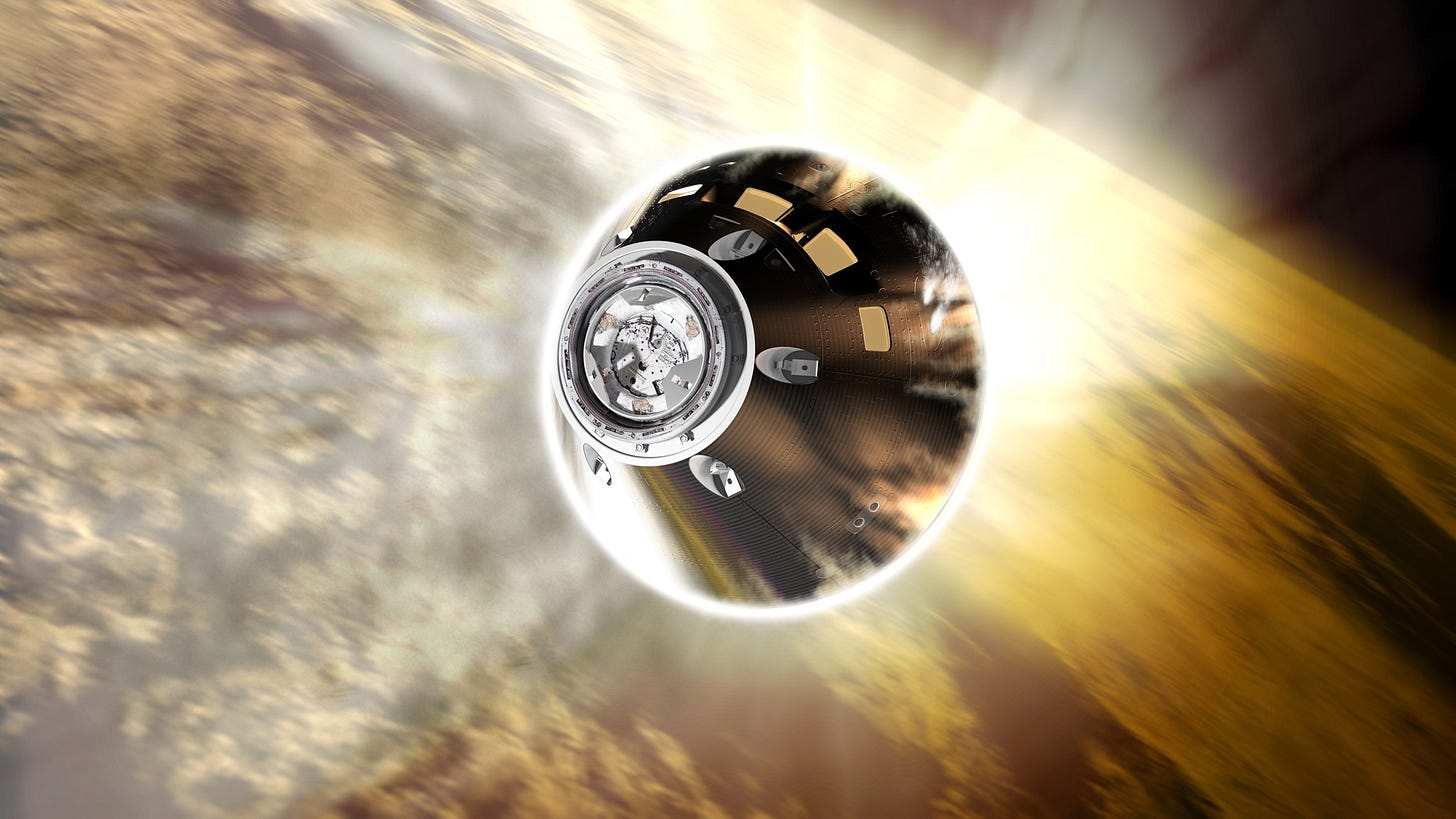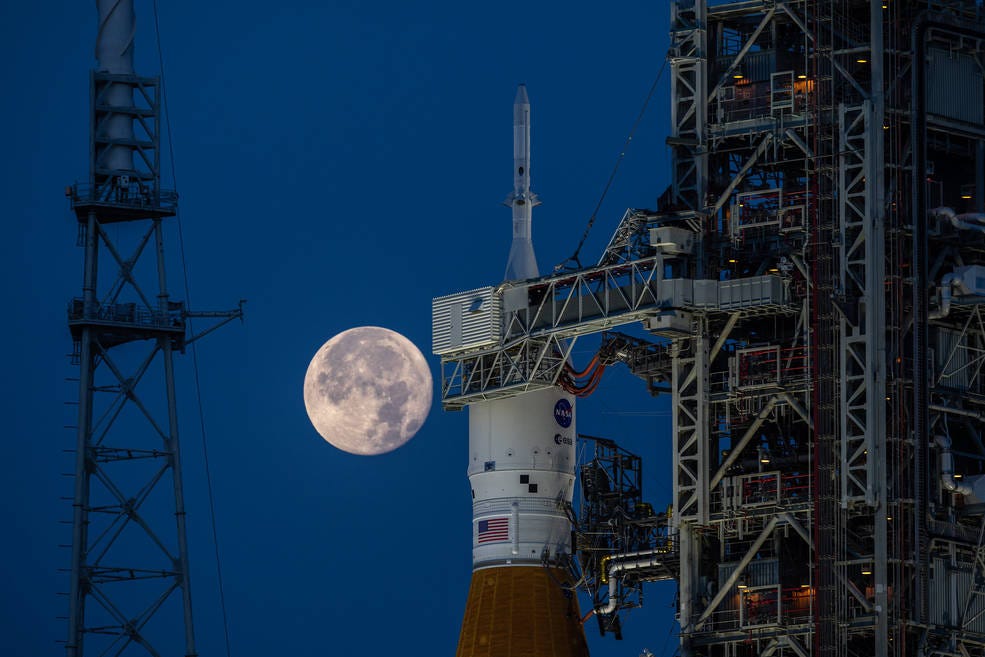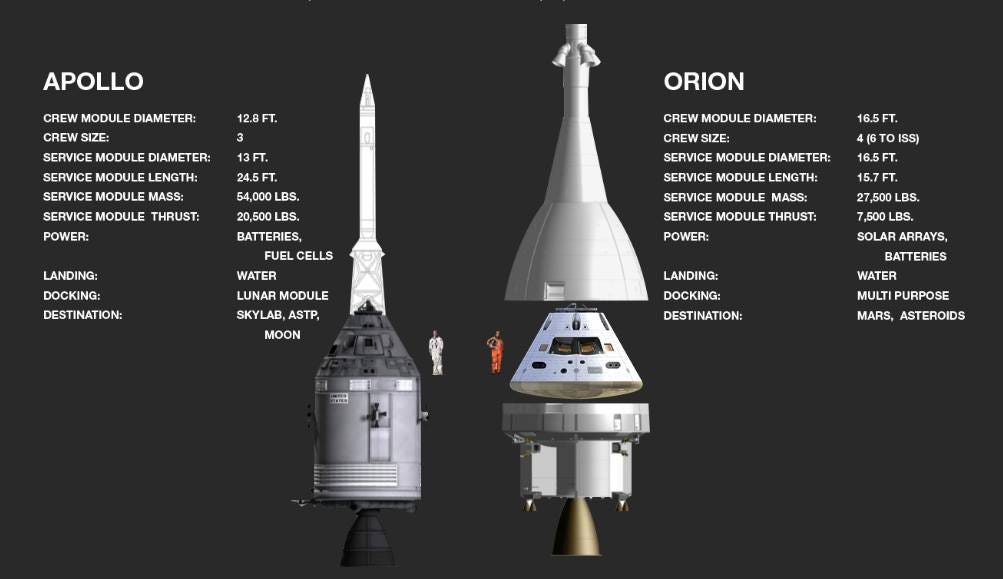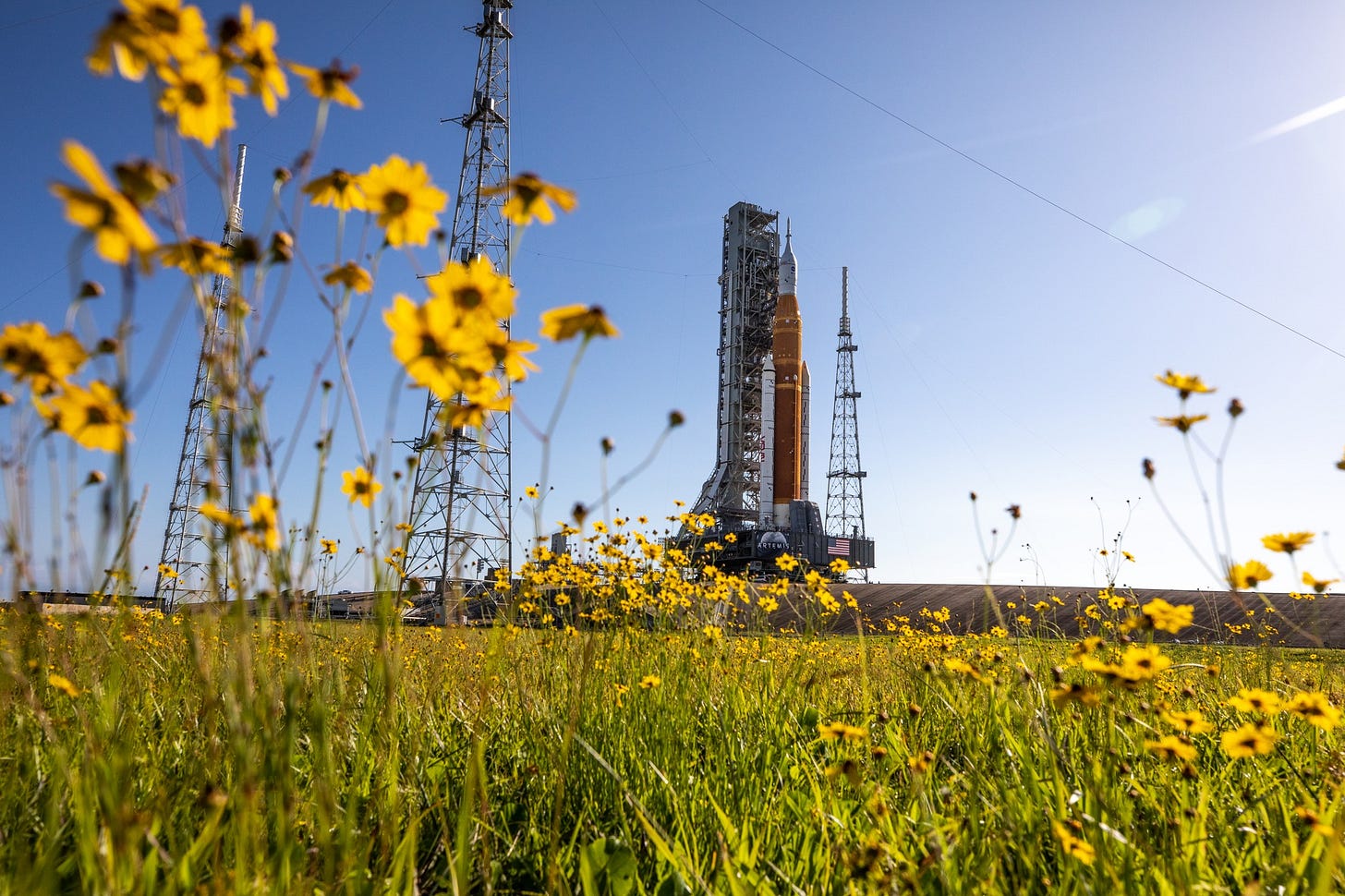
A video version of this Full Throttle is here.
Full Throttle looks at the Transportation Transformation we are experiencing. Subscribe! It's free and will be sent to your email twice a week.
I hope you know what's happening, and not just by reading Full Throttle. It’s mentioned in newspapers and on TV. The buzz, the excitement is building for America’s expected return to the moon in the coming days. The first launch window is Monday!
Artemis 1 is an unmanned test mission, and the number one priority is to make sure its heat shield will protect the capsule on returning to Earth at the fastest speed ever for a human-rated spacecraft.

NASA is unable to create the temperatures on Earth that the Orion capsule will experience on reentry. Heat shield protection is the number one priority for the test mission. (Credit: NASA)
It’s not just the heat shield NASA is wondering about. Because this is a test, NASA is going to push the Orion Capsule far beyond its design, even if that is a risky venture. The engineers want to learn whether their systems work and are robust.
STRESSING ORION
One of NASA’s top leaders, former astronaut Bob Cabana, just told reporters, “we are stressing Orion beyond what it was actually designed for, in preparation for sending it to the moon with a crew. And we want to make sure that it works absolutely perfectly when we do that. And that we understand all the risks.”

Orion capsule atop the SLS rocket making up the Artemis 1 spacecraft. (Credit: NASA)
Pushing the capsule so hard could produce problems that could force an early return. Cabana says, “that's okay. We have contingencies in place,” adding, ”we’ll see what we learn.”
How will NASA be stressing this spacecraft? It’s all about how long it will be in space. Orion is the capsule leftover from the Constellation Moon program, which President Barack Obama canceled 12 years ago. It was designed for missions lasting 21 days, which is a third longer than the Apollo capsule. Orion’s service module, designed by the European Space Agency, is also engineered for a 21-day mission.

NASA comparison of the Apollo system to the new Orion system. (Credit: NASA)
Artemis 1 is expected to be in space for twice as long as its design- 42 days. Cabana said, “we want to make sure that it works absolutely perfectly… that we understand all the risks. We're going to learn a lot from this test flight.”
EXPOSURE FOR CAPSULE
Why does it matter that the spacecraft will fly twice as long as it was designed for a flight? The former Navy pilot, Cabana, said it is about stress. “Forty-two days puts a lot more stress on all those systems plus the environment. It's in longer exposure to radiation, longer exposure to micro-meteorite hits,” he told me during a media call.

Artemis 1 during a rollout to Pad 39B at the Kennedy Space Center. (Credit: NASA)
While a human-rated capsule will be orbiting the moon for the first time in decades, NASA wants to learn as much as it can. Those lessons will be applied to the Artemis 2 capsule, which is being built to carry four astronauts on a similar fly-by of the moon.
The man running the Orion capsule program for NASA, Howard Hu, says this aggressive test mission will take engineers to school. Hu called it, “pushing the envelope of the technologies that we have on board the spacecraft.”
NASA Associate Administrator Bob Cabana explains how and why the Orion spacecraft will be "stressed" during its mission. Full video piece here. (Credit: NASA)
THE NEW ROCKET
Just a couple notes on the Space Launch System (SLS) rocket that will carry the capsule into space. The NASA Administrator calls it, “the monster moon rocket.” Its engines are from the shuttle. It has solid rocket boosters similar to those on the shuttle. So the NASA engineers feel good about that technology.

Artemis 1 in the Vehicle Assembly Building at the Kennedy Space Center. (Credit: NASA)
They have flown these rocket elements for a few decades. But, this is the first time the technology has been assembled into an SLS rocket that will fly for the first time. Launch is set for Monday!
Follow me on your favorite social platform: Twitter, Instagram, Facebook, or LinkedIn for updates during the week. This is the Full Throttle YouTube Channel.
(Cover image credit: NASA)




